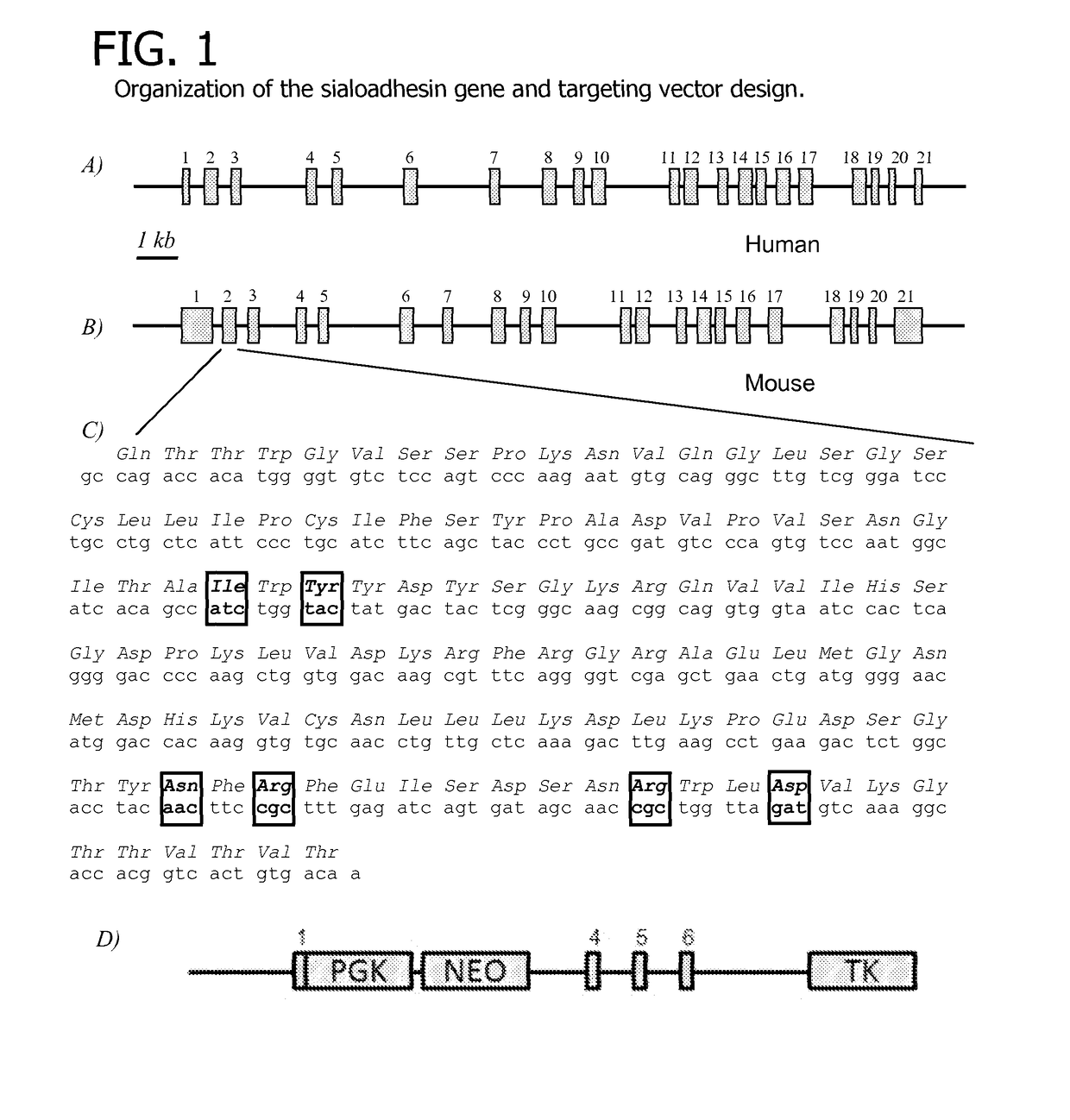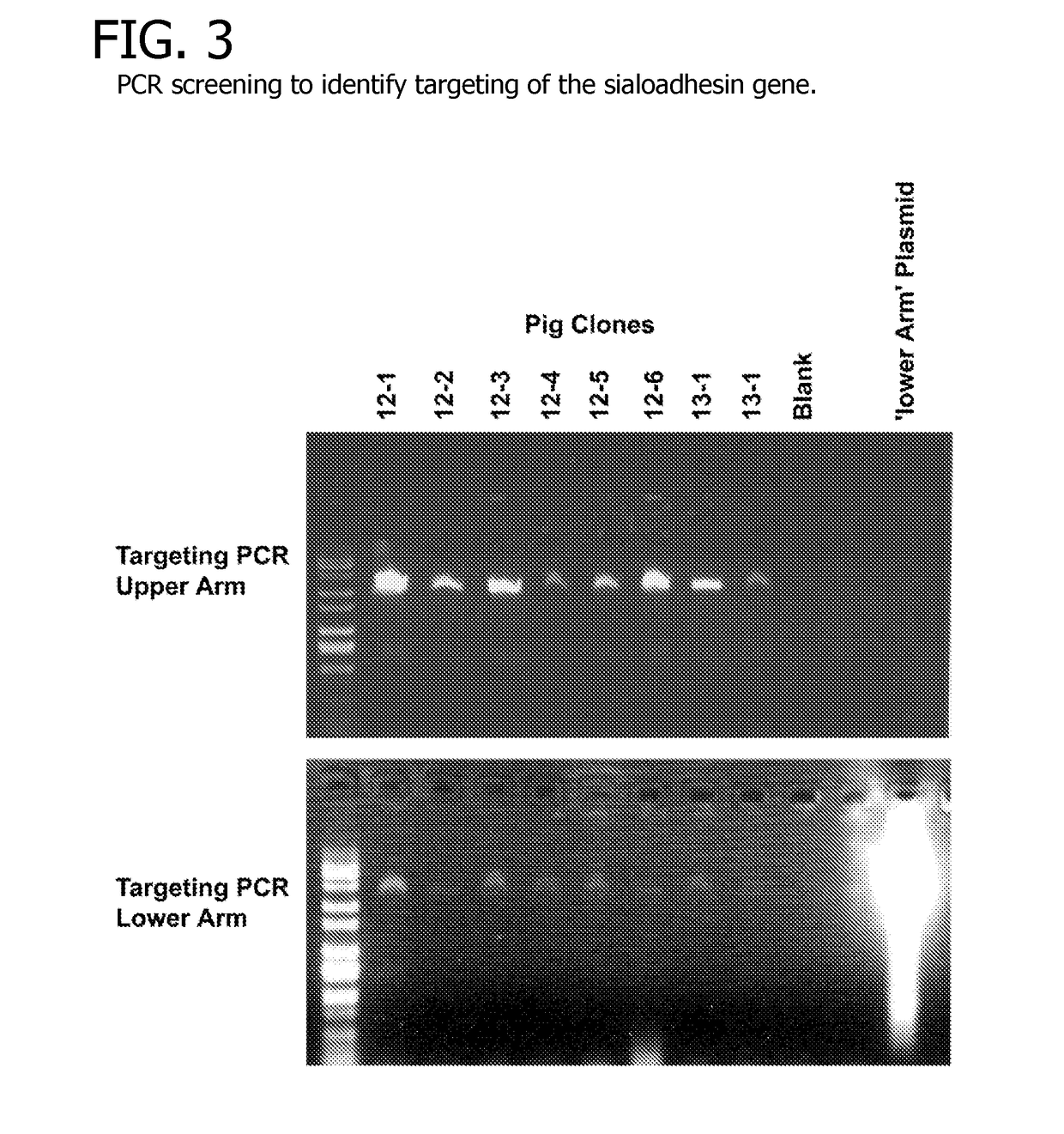Porcine reproductive and respiratory syndrome virus resistant animals
a technology of respiratory syndrome and resistant animals, applied in the field of genetically modified swine, can solve the problems of difficult control efforts, inability to consistently demonstrate protective immunity against heterologous strains, and inability to provide satisfactory protection with current vaccines
- Summary
- Abstract
- Description
- Claims
- Application Information
AI Technical Summary
Benefits of technology
Problems solved by technology
Method used
Image
Examples
example 1
[0081]Modification of the SIGLEC1 Gene
[0082]The approach employed to ablate the sialoadhesin gene made use of homologous recombination to remove protein coding exons and introduce premature stops in the remaining coding sequence of the sialoadhesin gene. The porcine sialoadhesin gene (SIGLEC1, NCBI reference sequence NM_214346) encodes a 210-kDa protein from an mRNA transcript of 5,193 bases (Vanderheijden et al. 2003). Porcine genomic sequence from the region around the sialoadhesin gene (Genbank accession no. CU467609) was used to generate oligonucleotides to amplify genomic fragments by high-fidelity PCR [AccuTaq (Invitrogen)] for generation of a targeting construct. One fragment (the ‘upper arm’) included the first coding exon and the 3304 bp upstream from the translation start. The second (lower arm′) fragment was 4753 bp in length and included most of the intron downstream of the third coding exon and extended into the 6th intron (including the 4th, 5th and 6th coding exons). ...
example 2
[0102]Generation of a CD163 Targeting Construct
[0103]As already established, deletion of the cytoplasmic domain of CD163 eliminates infectivity of PRRSV, as does the deletion or modification of SRCR domain 5. Since some of the SRCR domains of CD163 have important functions for survival of the animal, e.g. hemoglobin removal, modification of the gene such that these other functions remain intact represents a solid strategy to create pigs that are resistant to PRRSV. Prior research has also suggested that the replacement of SRCR5 domain with CD163L domain 8 also blocks infectivity (Van Gorp et al. 2010b). Thus, a targeting construct can be designed as shown in FIG. 6 to swap out SRCR5 of CD163 with the SRCR domain CD163L.
[0104]Once the targeting construct is made, the genetically modified swine which are heterozygous for inactivated CD163, wherein inactivation of the CD163 gene results in a CD163 protein which cannot bind and / or uncoat a porcine reproductive and respiratory syndrome v...
PUM
| Property | Measurement | Unit |
|---|---|---|
| time period | aaaaa | aaaaa |
| length | aaaaa | aaaaa |
| length | aaaaa | aaaaa |
Abstract
Description
Claims
Application Information
 Login to View More
Login to View More - R&D
- Intellectual Property
- Life Sciences
- Materials
- Tech Scout
- Unparalleled Data Quality
- Higher Quality Content
- 60% Fewer Hallucinations
Browse by: Latest US Patents, China's latest patents, Technical Efficacy Thesaurus, Application Domain, Technology Topic, Popular Technical Reports.
© 2025 PatSnap. All rights reserved.Legal|Privacy policy|Modern Slavery Act Transparency Statement|Sitemap|About US| Contact US: help@patsnap.com



